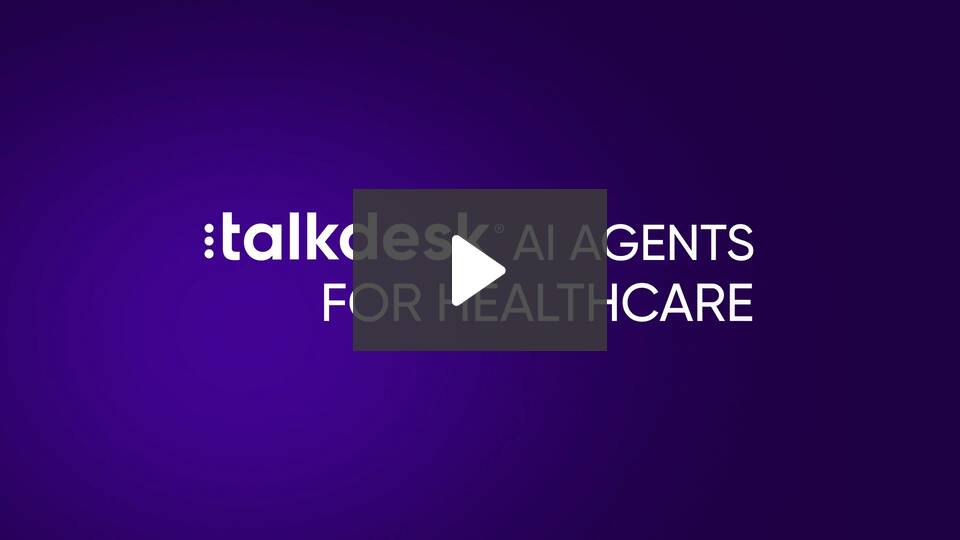Talkdesk is a global cloud contact center and customer experience platform that utilizes AI to help businesses enhance customer interactions and improve service efficiency. Talkdesk is leading a new era in customer experience with Customer Experience Automation (CXA), a new category and platform designed to automate the full complexity of modern customer journeys. Pulse 2.0 interviewed Talkdesk’s Vice President of Healthcare and Life Sciences, Patty Hayward, to gain a deeper understanding of the company.

Concept Of Contact Center As A Point Of Engagement
How do you define the concept of the “contact center as a point of engagement,” and what distinguishes it from the traditional customer service model? Hayward said:
“In healthcare, the contact center has evolved from a transactional support hub into a true point of engagement, a critical access point that helps patients and members navigate their care journeys with clarity, empathy, and efficiency. Leaders today are rethinking engagement strategies to scale their services without compromising quality. The contact center is often the ‘front door’ for patients seeking care, coverage information, or guidance on next steps. When designed as a point of engagement, it empowers patients to act on complex eligibility requirements, supports providers in coordinating care, and helps health systems manage costs while maintaining continuity and compassion.”
“Traditional automation tools typically address isolated functions such as appointment reminders or form intake. The modern approach is different: Multi-agent orchestration allows multiple specialized AI agents to collaborate seamlessly across systems, channels, and care teams. These AI agents, which are created with natural-language prompts, can autonomously manage tasks like scheduling, prescription refills, and knowledge-base optimization. They proactively reach out for follow-ups, identify information gaps, and enhance both patient experience and agent performance. The result is an interconnected, intelligent ecosystem that elevates the contact center into a strategic engagement hub rather than a transactional cost center.”
Utilizing AI And Automation
How is Talkdesk leveraging AI and automation to enable contact centers to become proactive rather than reactive? Hayward shared:
“AI and automation are transforming contact centers from reactive responders into proactive enablers of care. With Talkdesk, information is organized, updated, and personalized in real time, reflecting each patient’s history, intent, and health literacy level. Instead of waiting for inbound inquiries, AI-driven systems can predict needs, streamline workflows, and tailor communications. This capability allows a single contact center to coordinate complex interactions across multiple health plans, providers, and geographic regions with agility and precision.”
“This shift toward proactivity directly impacts outcomes and operational efficiency. Consider a hospital discharge scenario: One AI agent schedules follow-up appointments, another confirms medication readiness, a third sends educational materials, and a fourth updates the primary care provider’s EHR. Together, they orchestrate a seamless transition from hospital to home — reducing readmissions, improving patient confidence, and allowing clinical teams to focus on care rather than coordination.”
Data Integration Across Channels
In a “point of engagement” model, how does data integration across channels and systems shape the overall experience for the customer or patient? Hayward noted:
“Data integration is the backbone of a true point-of-engagement model. Talkdesk unifies data from digital triage tools, claims, EHRs, and CRM systems to create a single, dynamic view of the patient journey. This connected ecosystem powers our AI agents, which leverage both agentic and generative AI to conduct natural, human-like conversations and autonomously resolve complex, multi-step requests.”
“With integrated data, patient engagement becomes frictionless and proactive. Routine needs like appointment management or prior authorization can be automated through self-service, while outbound AI agents handle post-discharge follow-ups or close care gaps through EHR integration. Intelligent routing ensures patients reach the right help immediately, whether AI or human, without cumbersome menu navigation. Meanwhile, live agents benefit from embedded AI tools within EHRs like Epic, which automate documentation and surface real-time guidance. The result is a seamless, personalized experience that strengthens trust and continuity of care.”
Advice For Organizations
What advice would you give to organizations that still view their contact center as a cost center rather than a strategic differentiator? Hayward concluded:
“Healthcare organizations face mounting financial and operational pressures, from Medicaid shifts to reimbursement cuts and the ongoing transition to value-based care. The path forward requires more than cost containment; it requires intelligent automation that simultaneously improves patient experience and operational resilience. The modern contact center, powered by AI, can serve as the foundation for this transformation, enabling providers to scale services, improve care coordination, and optimize workforce productivity.”
“However, organizations must first shift their perspective: Contact centers are no longer just communication channels but strategic assets that drive measurable value. AI-driven contact centers can triage calls based on urgency, automate prior authorization and claims workflows, and handle routine administrative tasks, freeing clinicians to focus on direct care. By embracing this mindset, healthcare leaders can unlock new efficiencies, reduce burnout, and position their organizations as proactive partners in patient well-being rather than reactive responders to patient demand.”



